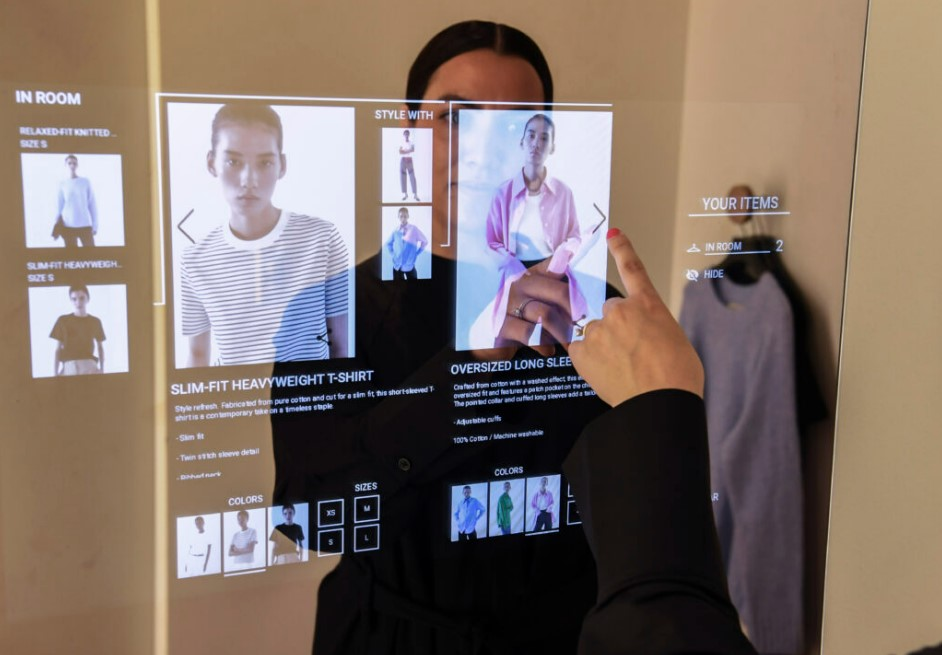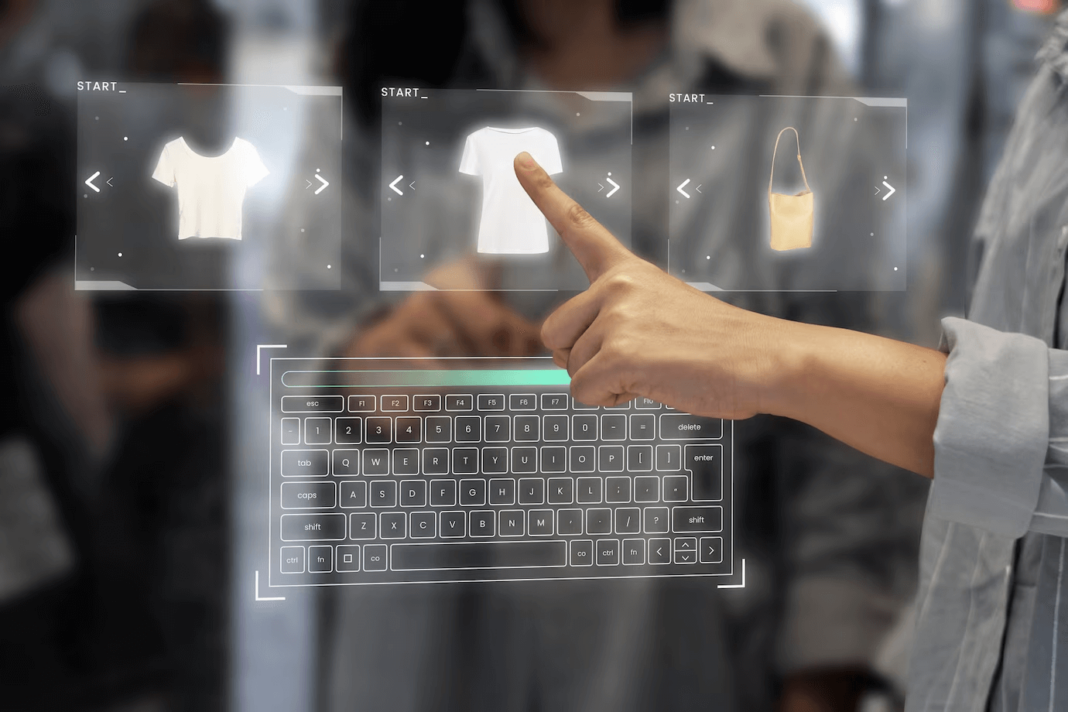The 20 Best Real-World Examples of AI in the Retail Industry
Retail shopping has stayed pretty similar for years: you go to a store, find what you need, and buy it. However artificial intelligence (AI) has the power to completely change this experience. It can personalize shopping, automate tasks, and make things more efficient. And it’s already happening! Check out these 20 cool ways AI is making retail better.
- Lowes Uses Robots To Help You Find Stuff
Hardware stores can be confusing, but Lowes made LoweBot to guide customers. These robots roam around, asking simple questions to figure out what customers need. They can give directions, show maps of products, and even share expert knowledge. LoweBots also keep track of inventory, so the store knows what to restock.
- Walgreens Uses AI To Track Flu Outbreaks
The flu is never fun and can be dangerous if not treated right. Walgreens uses data from filling anti-viral prescriptions at over 8,000 locations to track the flu’s spread. Their online map shows customers how bad the flu is in their area and helps Walgreens stock up on flu products where they’re needed most. AI is making shopping smarter for everyone!
- Sephora Makes Makeup Shopping Simple
Visit a Sephora store and discover your ideal makeup shade without trying it on. With Color IQ, your face is scanned to suggest personalized foundation and concealer shades. Lip IQ does the same for lipstick shades. This service is a big relief for customers who understand the struggle (and expense) of finding the right shade through trial and error.
- North Face Helps You Choose the Perfect Coat
Unsure which coat to buy? Let North Face assist you. They use IBM Watson’s cognitive computing to ask questions about where and how you’ll wear the coat. With this information, North Face offers personalized recommendations to help you find the ideal coat for your activities.
- Neiman Marcus Makes Shopping Easier with AI
Neiman Marcus, the luxury department store, is using AI to help customers find items effortlessly. With their Snap. Find. Shop. app, users can simply take pictures of items they like while they’re out and about. The app then scans Neiman Marcus’ inventory to find either the exact item or something very similar. No need to struggle with vague search terms anymore!
- Taco Bell Revolutionizes Taco Ordering with AI
When the craving for tacos hits, waiting isn’t an option. Taco Bell stepped up as the first restaurant to offer AI-powered ordering. Their Tacobot, compatible with Slack, lets customers text or speak their orders, even accommodating customizations and large group orders. And to keep things fun, the bot responds with Taco Bell’s signature quirkiness after each order.
- Macy’s Enhances In-Store Experience with AI
Ever wandered into a department store and felt lost? Macy’s has a solution with their On Call app, personalized for each store. Customers can open the app while shopping and chat with an AI bot for directions to specific items or to check if something’s in stock. If frustration sets in, the bot can alert a human employee to step in and assist.
- Walmart Introduces Shelf-Scanning Robots
Walmart, one of the world’s largest retail chains, is now using robots to assist in-store operations. These robots are being tested in multiple Walmart stores to scan shelves for missing items, restocking needs, or price adjustments. By employing robots for this task, Walmart aims to free up human employees to focus more on assisting customers and ensuring that shelves remain stocked.
- ThredUp Personalizes Shopping with AI
ThredUp, an online consignment store, has launched Goody Boxes containing curated secondhand clothing items tailored to each customer’s style. Customers only pay for the items they like and can return the rest. ThredUp uses AI algorithms to learn and remember each customer’s preferences, ensuring that future boxes better match their style. This approach simplifies shopping compared to searching for individual pieces.
- Amazon Revolutionizes Checkout with AI

Amazon has introduced the Amazon Go store, a pioneering retail concept where customers can enter, pick up items, and leave without going through a traditional checkout process. Sensors and cameras inside the store track items selected by customers, and their Amazon accounts are automatically charged upon exit. AI technology enables a smooth and efficient shopping experience, eliminating the need for waiting in checkout lines.
- Uniqlo Innovates with AI to Personalize Shopping
Uniqlo is using cutting-edge science and AI to enhance the in-store experience. Some stores now feature UMood kiosks powered by AI. These kiosks analyze customers’ reactions to different clothing colors and styles through neurotransmitter measurements. Based on these reactions, the kiosk suggests products tailored to each customer. No button pressing is required—just your brain signals telling the system what you like.
- West Elm Uses AI to Match Style with Products
In the past, customers would bring physical style boards to furniture retailer West Elm to show what they liked. Now, West Elm’s Pinterest Style Finder uses AI to scan customers’ Pinterest boards and understand their style. It then generates a list of recommended home décor and furniture items that align with their taste. It’s a simple way for customers to achieve a beautifully designed home that reflects their unique style.
- Sam’s Club Simplifies Warehouse Shopping with AI
Sam’s Club has introduced a smaller, AI-powered store concept called Sam’s Club Now. This innovative store allows customers to shop without using traditional checkout lines. Additionally, the store’s app can guide customers through the most efficient route to gather everything on their shopping list.
- Olay’s AI-Powered Skincare Analysis
Olay uses AI to provide personalized skincare advice without the need for a dermatologist. Customers use Olay’s Skin Advisor by taking a selfie, and the app’s AI analyzes their skin to determine its true age and health. Based on this analysis, the app recommends a personalized skincare routine to address specific concerns.
- Kroger’s Tailored Shopping Experience
Kroger is experimenting with smart shelves that interact with the Kroger app. As customers walk through the store with the app open, sensors recognize them and suggest products based on their preferences. For example, gluten-free shoppers might be shown gluten-free products, and parents might see kid-friendly snacks. The app also offers personalized pricing and notifies users of discounts on items from their shopping lists.
- H&M’s AI-Driven Inventory Management

H&M uses AI to keep its stores stocked with popular items. By analyzing store receipts and returns, AI helps H&M understand which products are selling well in different locations. This data allows H&M to adjust its inventory accordingly. For instance, if floral skirts are popular in urban areas, H&M can increase stock levels of these items to meet customer demand.
- Zara’s Robot-Assisted Order Pickup
Zara now uses robots to help customers pick up their online orders in stores. Customers enter a pickup code at the store, which sends a robot to fetch their items from the warehouse. The robot then delivers the order to a drop box, making the process quick and efficient.
- Starbucks Introduces AI Ordering
Starbucks introduced an AI-enabled voice ordering system called My Starbucks Barista. Customers can use this app to place orders by voice or text. When they arrive at their local Starbucks, their order is ready, allowing them to skip the line.
- American Eagle’s Interactive Fitting Rooms
American Eagle is developing interactive fitting rooms where customers can scan items they want to try on and check stock availability. Employees are alerted if the customer needs assistance or wants another item. The technology can also suggest products based on what the customer is trying.
- Rebecca Minkoff’s AI-Powered Smart Stores
Designer Rebecca Minkoff has AI-powered “connected stores” featuring touchscreen smart mirrors. Customers can browse clothing and try items in interactive fitting rooms with customizable lighting. The mirrors use RFID to identify items customers try on and suggest other options in different colors or sizes.
Conclusion
AI is revolutionizing the retail industry, improving customer experiences, and optimizing operations. Lowe’s and Sephora are using AI to personalize customer experiences while Walgreens and Olay are utilizing AI-driven insights to adapt to changing market demands. QeDatalab and similar organizations are leading the way in AI solutions for retailers. Their innovative applications empower retailers to optimize inventory management, personalize customer interactions at scale, and redefine the retail experience.
